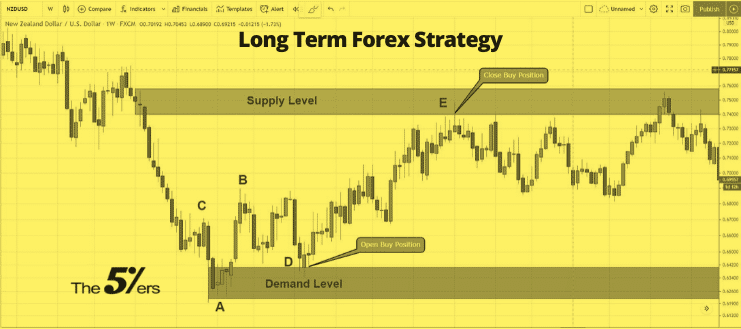While automated trading is ruling the world and it is a great method of trading for many reasons, many traders still prefer manual trading. When it comes to manual trading, it is essential to figure out the right trading strategy for yourself or you may have to face many problems.
There are some key factors while choosing the ideal trading strategy for you, they are:
Your Programming Skills
The level of your programming skills plays a major role in choosing your trading strategy. If you are good at programming and know some programming languages like Java, Visual Basic, C++, or C#, you are capable to explore high-frequency strategies. Moreover, you can trade a wide range of securities. On the contrary, if your programming skills are not high, you should settle for strategies that can trade only once a day. These strategies may allow you to trade just a few currencies, stocks, or futures. However, you may overcome this constraint by hiring a software contractor, but you will have to consider the expenses.
Your Trading Hours
You should choose your trading strategy considering the fact if you trade part-time or full time. If you are a part-time trader, you should go for overnight strategies instead of intraday strategies. Otherwise, the strategies would have to be fully automated, so they run on autopilot mode and alert you when a problem occurs.

Your Trading Goals
Most people want to become traders to earn a steady income monthly or quarterly. However, that may not be everyone’s goal. For example, your goal may be long-term capital gain. The strategies for short-term income versus long-term capital gain are categorised mainly by the holding periods. If you hold a stock for one year, you will not be able to generate much monthly income. That would be only possible if you have been trading for a while and you launch new sub-portfolios every month while holding them for a year.
Usually, even if you hold a stock only for a month, the month-to-month profit fluctuation is bound to be huge unless there are hundreds of different stocks held in your portfolio. As a result, you cannot rely on generating monthly income. It is important to understand the relationship between the holding period and the consistency of returns or the shape ratio, and conversely, the relationship between the trading frequency and the drawdown. The main point you need to understand is the more regularly you want to generate income, the shorter the holding period you should have.
There is a misconception among traders based on the statement of some investment advisers. They say that a buy-and-hold strategy is the best for traders who want to gain maximum long-term capital growth. However, this theory has been proven to be mathematically false. In reality, you can achieve maximum long-term growth by using a strategy with the maximum Sharpe ratio if you have access to adequately high leverage.
So, one strategy is short-term with a very high Sharpe ratio but a very short holding period and a small annual return. The other strategy is a long-term one with a lower Sharpe ratio but a high annual return and a long holding period. If you compare these two strategies, it is better to choose the short-term strategy even if you have a goal to achieve long-term growth.
Your Trading Capital
The last factor that plays an important role in choosing your strategy is your trading capital. First, you need to check if you have enough capital to trade and also cover the expenses of infrastructure and operation. Usually, an account with a capital of less than $50,0000 is not recommended for quantitative trading. You may say that the capital of $100,000 is the dividing line between a high and low-capital amount.
If you have a low-capital amount, you should go for strategies that utilize the maximum leverage available. Keep in mind that getting higher leverage is only advantageous if your strategy is consistently profitable. When you trade currencies, futures, and stocks, it offers you higher leverage than stocks. Another thing to know is an intraday position allows a regulation leverage of 4 but an interday position allows leverage of 2.
Availability of Capital
So, double the amount of capital is required for the same size of the portfolio. Finally, the availability of capital or leverage decides if you should concentrate on directional trades or dollar-neutral trades. A dollar-neutral portfolio or market-neutral portfolio needs twice the leverage or capital than a short or long-only portfolio. So, even though a hedged position is safer than an unhedged position, the returns are smaller and they may not meet your requirements.
Your capital also affects how much you can spend on different software, data, and infrastructure. For instance, if your capital is low, your online broker may not be able to provide you with live market data for many stocks. As a result, you cannot use a strategy that uses live market data over a wide array of stocks. With low trading capital, it is also difficult to subscribe to a third-party market data vendor because it also requires extra cost.
Similarly, clean historical stock data with high frequency is more costly than historical daily stock data. So, a stock-trading strategy with high frequency is not possible with small capital expenditure. When it comes to historical stock data, it is important to know if the data is free of survivorship bias. You need to know that this kind of data is much more expensive than data with the survivorship bias. However, if your data has survivorship bias, you will get unreliable backtest results.
Conclusion
When it comes to manual trading, you should never choose your strategy in a rush. It is true that considering all factors is time-consuming, but it is better than ending up with a wrong strategy that will make you lose your money. So, take time, and figure out the best strategy for you before putting your capital on stake.
